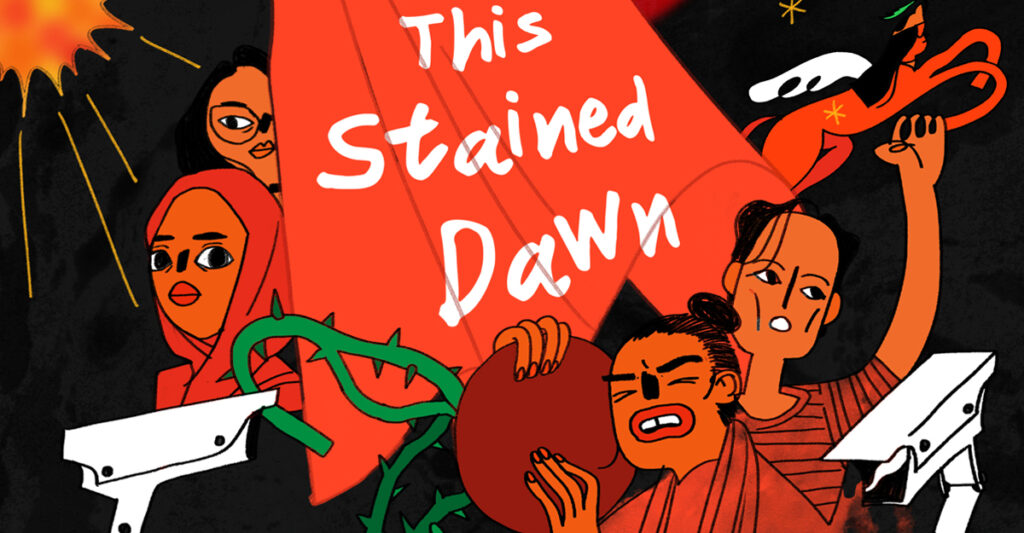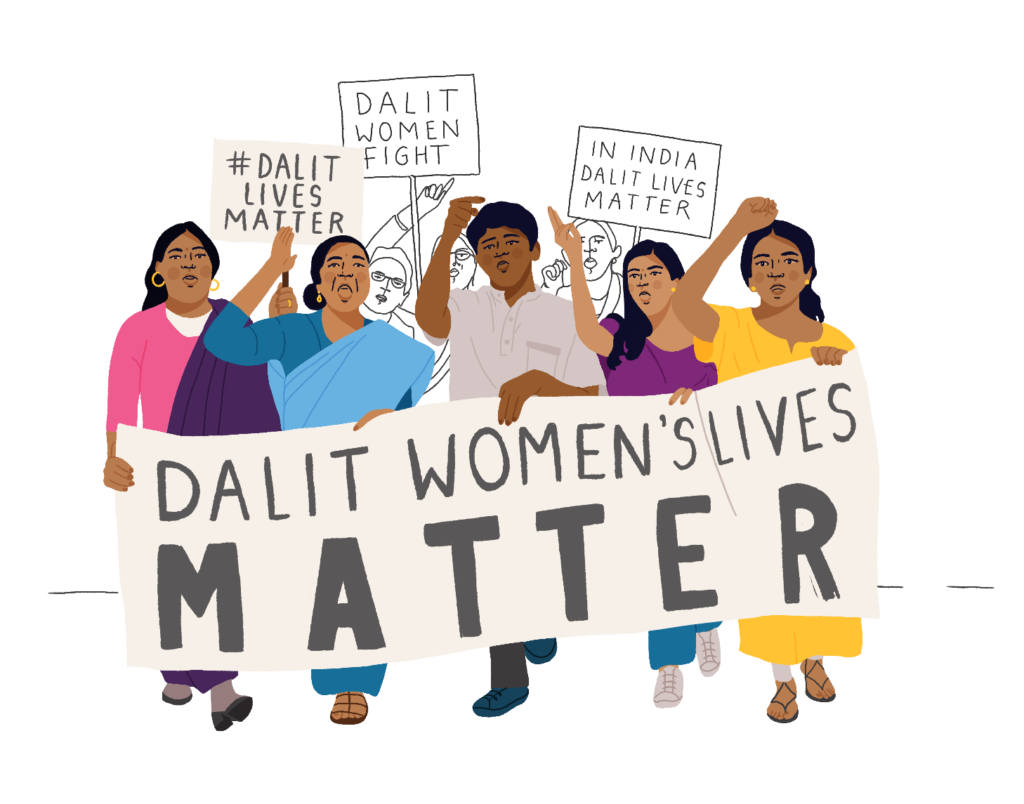The protests in Iran have now entered their fourth week as rage in response to death of 22-year-old Mahsa Amini has spread across the country. These protests remind me of another occasion in a very different context, where women came out onto the streets. That time it was in India in 2020, with women protesting against the discriminatory Citizen Act Amendment (CAA) and National Register of Citizens (NRC) laws imposed by the Indian government. Each protest movement has many differences but also some similarities and are worth exploring further.
One key difference is the practical formation of the protests. In Iran, the protests seem to be much more spread out geographically and often among individuals or small groups. In contrast, in India there was an epicentre of the protests – Shaheen Bagh – where thousands of women sat together in protest, for 101 days, 24 hours a day. Also different was the way the women protested and used public spaces to protest – in Iran, women are coming out for a day or two in these public spaces, while in India, women reclaimed the space of a busy highway and sat in protest over a much longer time.
Yet, in both Iran and India, these women are first-time protestors, reclaiming public spaces and discourses in striking ways. I have been thinking also about the differences between the violence that women in Iran are facing from the authorities, and the more or less peaceful 101 days of protest at Shaheen Bagh. While both protests have been under authoritarian governments with shrinking spaces for dissent, why is there much more violent backlash against the women in Iran?
Histories of protest
These differences could be attributed to the historical ways in which women have come out into public spaces to protest. India has a long tradition (since pre-Independence) of sit-in protests, while in Iran, the historical protests have been for specific days/nights, rather than as a sit-in. However, there may also be political factors at play – especially in the nature of backlash that the women have faced, and therefore their strategies of response being so different in order to respond to this backlash. But then, why has the backlash to women’s rights and to organising in these situations been so different? The answer could lie in the types of issues that the Iranian and Indian women are protesting about, or in the type of regimes that are in power in the two countries.
Protests: against doctrines or not?
In Iran, women are protesting against state control over their bodies – Htun and Weldon would classify this as being doctrinal issues. Raising doctrinal issues risks a much more violent backlash – because these are taken as an affront not only to patriarchy, but also to ethno-religious sentiments, as we see now in Iran. Women’s bodies have become the tools of domination for patriarchal, religious forces that are in control in the Iranian state, and therefore the contested terrain that women are fighting back over. The protests in Iran face greater backlash as women take up the mantra ‘women, life, freedom’, as this is a bigger risk to the religious, political regime.
In contrast, Indian women are protesting about citizenship rights for them and their children, i.e., a non-doctrinal issue. While women are putting their bodies on the line to protest, their bodies are not subjected to state control and repression in the same way. Women in Shaheen Bagh operated mostly within patriarchal (and religious) boundaries, while the Iranian women are transgressing these norms and openly denouncing these boundaries.
The nature of the backlash from the state and its security agencies (the police and army in India, the religious police in Iran), seems to therefore be shaped by whether or not personal norms (pertaining to women’s bodies) are contravened.
Different political regimes
However, the explanation of this would not be complete without a look at the regime types in India and in Iran. India is an elected democracy. Although there has been much more concentration of power in recent years, with some analysts calling India a fascist, police state, an elected autocracy, there is still a semblance of elected representatives and a federal system with strong political competition (at the state level). This puts constraints on the nature of backlash that the Indian state can met out to those who resist.
The women of Shaheen Bagh did face threats of violence from the state apparatus, but this was not realised in a systemic manner against them. Instead, the Indian state chose to instil fear amongst the protestors and those who supported these protests, by incarcerating specific activists under the draconian UAPA laws of sedition. The backlash therefore became not only intentional, targeted and episodic, but also cyclical.
In Iran – a religious theocracy – the backlash from the state towards any protest, especially from women, is much more violent. The state apparatus of the moral police have the mandate to impose unequal citizenship between men and women through aspects such as strict dress codes and sanctions. While in India too, the Rashtriya Seva Sangathan (RSS) can and does impose sanctions against dissent, they are at best, informal community structures, albeit with backdoor connections to the present-day ruling party (the Bharatiya Janata Party – BJP), as compared to Iran’s codified system.
In addition, the political competition in Iran is low, hence elected representatives have less accountability towards citizens and therefore more space for violent repression. With the rise of the RSS and the collapse of political competition, India too, is closing down any civic spaces of dissent, and it is hard to imagine another Shaheen Bagh in present times without violent repression from the state.
Common protest strategies
Regardless of the nature of backlash, the one critical commonality amongst the protests in Iran and in India is the strategies that women have adopted. In both cases, the protestors have taken over the space of the public, with media coverage over analogue and digital mediums amplifying the voices and issues of the protestors and increasing their numbers. This has been met in both countries with internet shutdowns and policing of social media – yet this is harsher in Iran than in India (with bans on foreign or international media), probably because a) in India (unlike Iran), the mainstream media is in the hands of the ruling regime, which allowed them to spread misinformation and fake news about the Shaheen Bagh protests; and b) because the level of violence in Iran is much higher, hence the need for greater repression of news.
Both the Indian and Iranian women have had diffused leadership – showing ownership amongst a wider base of protestors, thereby also raising their own voices rather than being represented by specific leaders or organisations. And in both India and Iran, protest art is playing a critical role in amplifying the messages of the protestors as well as memorialising these protests.
Finally, through these protests, the Indian and Iranian women have built alliances across intersectional and intergenerational identities. In India, the women of Shaheen Bagh built a network amongst themselves, as well as with students, farmers, Dalit activists, with both young and old women being a central part of these protests. In Iran, it is clear that women, schoolgirls and students are joining the protests, and this cuts across class divides. In both cases, men, especially those linked to the households of these protesting women, support their efforts. These alliances have been built through women imbibing their protest with as much care, as rage and anger.
Overall, it is clear that women around the world are increasingly going to be protesting against being bound by the norms of patriarchy and neo-national, religiosity. While the nature of the backlash against them will depend on whether the terrain of contestation is over their bodies or their identities, it is important for women’s struggles to keep using new and innovative strategies in order to resist this backlash, learning not only from previous incidents in their contexts, but also across contexts to facilitate learning.
Recognising the need for this kind of learning in South Asia, our research in SuPWR aims to identify when, how, and why women’s power struggles in Bangladesh, India, Nepal and Pakistan succeed in retaining power and sustaining gains against backlash. We hope that the learnings from SuPWR will give hope and strength to protests such as those in Iran, as well as the opportunity to share practical ideas for strategies and mechanisms for women’s struggles.

